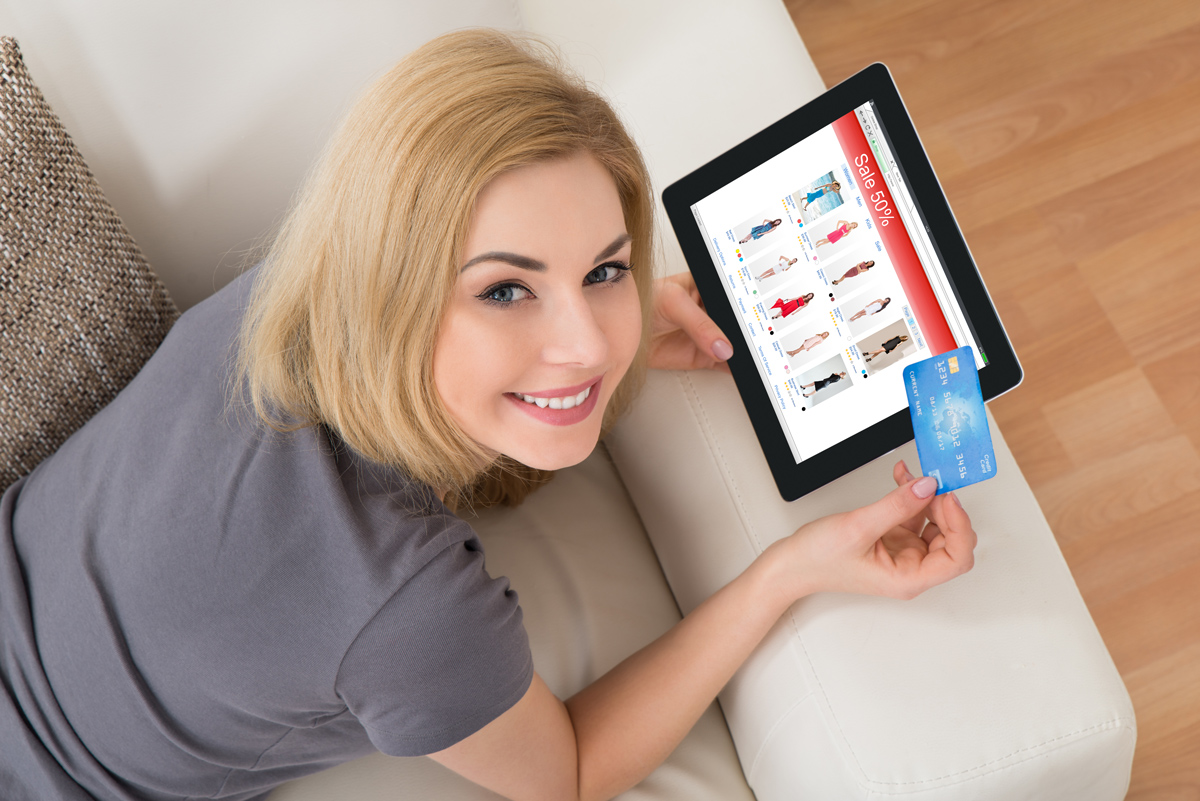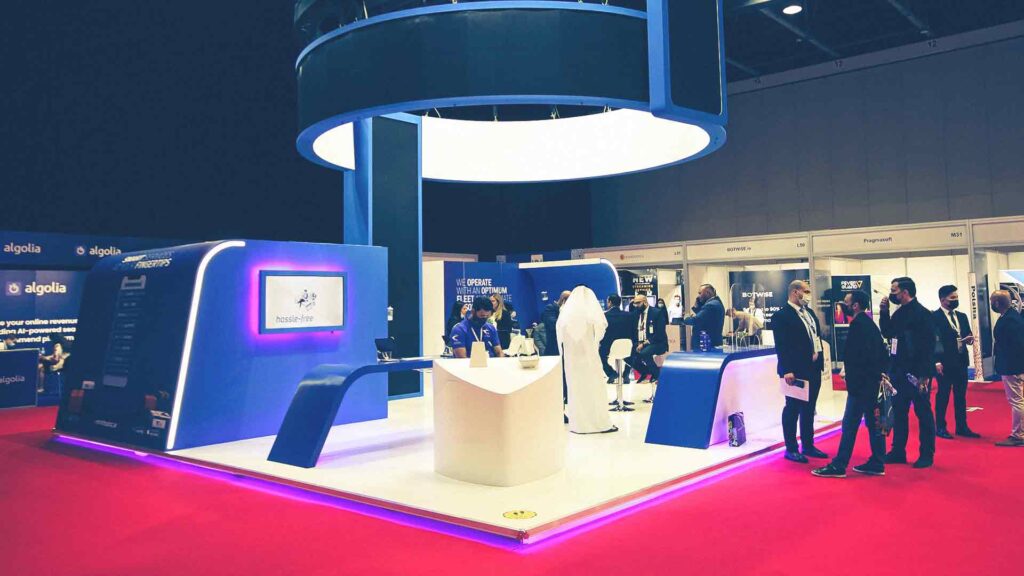Standing out is always a concern for growing retail companies: Competition is a fact of life, and there’s only so much time to devote to brand management. We’re helping out by going over the most effective methods in 2019 for making people take notice of your store, both online and offline. Incorporate these retail tricks, build a social media presence and you’ll see results.
Create a Seamless Online/Offline Experience
Your storefront should reflect your brand – both online and offline. When people visit your online store, they should have as similar an experience to your brick-and-mortar store as possible. That starts with logos and color schemes, but it also goes a lot deeper. Some important web design components to consider include:
- How products are grouped together for browsing
- How products are shown – how much the labels and packing resemble the in-store experience
- How large your images are, large images are important for a good mobile shopping trip
- How personable images are: Check out how many of the top ecommerce website designs feature people, no matter what they’re selling
- The language your use to describe products
- How easy your online checkout method is
- How well your loyalty rewards tie into online purchases
- What assistance you offer, such an online chat window or customer support number
- Where else you sell: 48% of online shopping in America begins at Amazon, so offering your products on places like the Amazon marketplace is very important
More Color Options, Monograms, and Other Personalization
Personalization has never been bigger in the retail world, but many of your competitors may be slow to adopt personalization options. Take advantage of this by introducing customization of your own. More unique color options and monogramming are two easy ways to personalize many kinds of products. Embroidery or etching are also good options for other stores. You don’t have to offer too much, just thoughtful little ways that customers can make products their own. This makes it much more likely that customers will return to buy gifts and other purchases.
Focus on Offering Social Proof Via Reviews
Social proof is online evidence, outside of your marketing, that customers like your brand and products. One of the best types of social proof are online reviews and testimonials, which show real stories and opinions from people willing to comment. There are many ways you can encourage these reviews on Facebook and Google. If possible, you should also send out links in your follow-up emails to web forms where customers can fill out a customized review.
Use this review content for your marketing across social media and your own website. Give visitors plenty of proof that others have had a great experience!
Offer AR Experiences
AR, or augmented reality, may seem like a weird choice for retail, but it’s destined to become part of the shopping experience – maybe even a core part. AR in the retail market is expected to grow by an annual average of 45% between 2019 and 2025. Fancy goggles are not required! People just need to download the right app on their phones.
Why? Well, augmented reality has a lot of uses in the retail world, especially when people shop digitally. Popular examples include:
- Making sure furniture fits: Ikea and other furniture stores offer AR apps that allow you to put 3D representations of furniture products in your current living space, making it easier to see if they’re right for you.
- Décor viewing: Some apps, such as Magnolia Market’s, detect a flat surface and then allow you to place digital images of a décor on that surface to see how it looks.
- Virtual cosmetics: This is a fast-growing niche where beauty product companies offer apps that detect faces or hands and allow you to apply a variety of virtual cosmetics to get a better idea of how they will look.
- Clothing sizes and appearance: The GAP, Nike and others offer apps that allow you to see what products look like from an ore 3D perspective, and how clothing sizes fit/hang differently. Nike’s app even includes a Pokémon-like AR game to find rare shoes.
- Jewelry comparison: Jewelry AR apps help you see what jewelry will look like on your hands (some can even track your fingers), without the need to test out products in person.
It may feel like AR is experience only the big brands can afford to provide, but there are many services working to help smaller companies develop AR offerings of their own – it’s definitely worth a closer look if your target audience tends to shop frequently on mobile devices.
Make Your Store More Comfortable
The “cozy” feel is a big trend now, and a great way for more independent retailers to make their shopping spaces stand out in ways that big chains aren’t allowed to experiment with. Don’t be afraid to make your store look like a place people can feel at home in. Lighting, seating, and decoration all have lots of potential to make a shopping space more inviting. You can then use images of this inviting space on your website and social media to draw even more attention.
If your retail store involves some on-site production or work, try not to hide it in the backroom if possible. Bring it into your storefront or see if you can put up a window that allows customers to see the action. This helps include the customer and makes them feel more invested in your products!
Prepare for Visual and Voice Search
Visual search refers to apps that can identify images through the camera and provide information on them via online content, such as reviews, online pricing and more. Voice search refers to asking a voice assistant for help, like saying, “Hey Google, what’s the nearest store that sells baby clothes?”
Retail brands should be prepared for both. For visual search, this means having very clear, large images of your products, preferably against a white background, which makes it easy for visual search bots to find them. Product images should also include all important descriptive and pricing information on the same page.
For voice search, make sure that your local SEO is strong, and your business contact information is easy to find online so that voice assistants will have no trouble adding you to the list.
Look for Temporary Storefront Opportunities
Temporary storefronts or “pop-ups” are becoming a popular way of expanding your store’s physical reach and bringing your brand to audiences that may not have seen it in person. According to a Storefront report, pop-up locations are currently expected to generate around $80 billion per year.
Temporary stores are easy to set up, especially if you have a little extra storage space. All you need is a stall or cart and a mobile POS. Then you can start looking at local events, festivals and markets to see how you can reserve a spot and what type of licensing you may need to begin selling there.
Try to Highlight a Different Product Every Week for Social Media
This is particularly good advice for retailers that have a wide variety of products: Help customers and followers keep track of your offerings by showcasing a different product online every week or so. Talk about how it’s made, where it’s made, and how customers like to use it. This helps viewers get more engaged with your brand, and will help keep your product lines fresh in the minds of customers who may not otherwise remember that you carry something.
If you want to make your retail brand stand out but still aren’t sure where to being, take a look at our Digital Marketing Services page. We would love to help!





